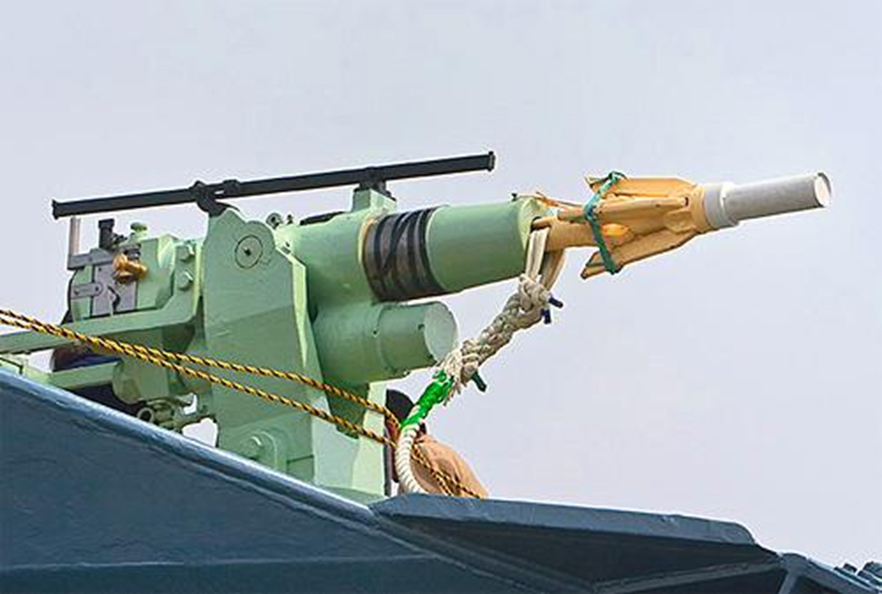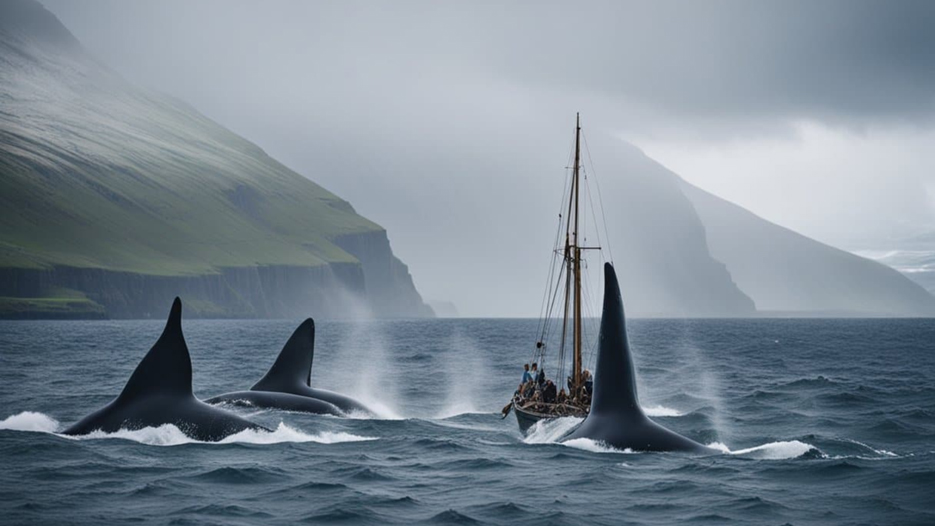Whaling is a historical tradition of hunting whales for food and oil. This tradition dates back to the Neolithic stage, where whales were hunted sustainably, and all parts of the whale were used for food, fuel, and other purposes. However, this tradition was soon contaminated by commercial whaling in the mid-20th century, when the Europeans and the Americans saw this practice as a business, officially hunting these majestic oceanic mammals for profits with modern technological tools like Foyn’s harpoon canons and seven-knot Spes et Fides, first steam-powered whale catcher at an alarming rate to an extent where some species were on the verge of extinction.

A Harpoon Canon installed in a whaling Ship
Soon enough, the world saw the damaging effects of hunting whales and set up “The International Whaling Commission” in 1946. Although this intergovernmental body was less effective initially due to its failed quota agreements on whale stocks, it soon imposed a global moratorium, which came into effect in 1987. This global moratorium has a few exceptions: whaling continues to be legal for scientific research and aboriginal subsistence provisions. Japan, however, chose to resume its commercial whaling on the pretext of scientific research purposes, and the remains were used as food. The global members of the IWC soon imposed a backlash on Japan, making it exit the IWC in 2019.
Nowadays, countries like Japan, Norway and Iceland hunt whales. Norway conducts commercial whaling under a self-allocated quota, objecting to the IWC moratorium. Iceland has issued a commercial quota on Fin and Minke whales, although its actual whaling activities vary each year due to global demand and domestic policies. However, the real question here would be, is whaling necessary? Should the whales be hunted for food? The Icelanders answered this question through a poll conducted by BBC News wherein 42% were against it, and 29% were in favour. Numerous researches conducted over the past years have answered the more scientific answer to this question. Whales are one of the top marine carnivores in the oceanic ecosystems. Let me introduce you to biomagnification. The definition of this word is the process by which a compound (such as a pollutant or pesticide) increases its concentration in the tissues of organisms as it travels up the food chain. We all know environmental pollution is a significant concern, and the surrounding pollution of the oceans ultimately ends up in the bodies of these apex predators, with an increased concentration of pollutants in their bodies. A study in the Faroe Islands in the North Atlantic, near Iceland, shows that the whale meat had 2.0 ppm of mercury (pollutant), twice that of the WHO advisory of 1.0 ppm, making it harmful for human consumption. Similarly, in the Caribbean islands, whale meat had 20.5 ppm of mercury, making it dangerous for human consumption. Therefore, Whaling for food should be highly scrutinised and thought over as pollutants like mercury cause Neurological and Behavioural Disorders and Parkinson ‘s-like diseases in adults. How are whales important to ecosystems? Another vital question that has to be answered is, Whales play a vital role in marine nutrient cycling. Their waste, for example, helps make organic carbon more available to smaller organisms. Even in death, whales contribute significantly to carbon cycling, particularly by transporting carbon to the deep sea. As a whale carcass sinks to the ocean floor (a phenomenon known as a whale fall), it carries carbon absorbed at the surface, often from plankton, down to the seabed. Larger whales, which contain more carbon, transport more of it to the deep sea. However, whaling has reduced both the population and size of whales. It’s estimated that restoring whale populations to their natural levels could lead to the deep-sea export of about 160,000 tonnes of carbon each year, equivalent to the carbon in more than 36 double-decker buses daily. This is crucial in global climate change, as carbon sequestered in ocean sediments no longer interacts with the atmosphere.
As a whale carcass descends to the seabed, it provides a crucial food source for hundreds of organisms in an otherwise nutrient-poor environment. Scavengers like hagfish, sleeper sharks, and various invertebrates consume 40-60 kilograms of soft tissue daily. Deep-sea worms and crustaceans feed on the remains until only the bones are left. Even then, bone-eating microbes continue to break down what remains of the whale.
Therefore, the global impact of Whaling is real. We must conserve these magnificent sea mammals by adhering to the IWC regulations and imposing a ban on whale meat. Instead, whale-watching tourism should be adopted. Countries like the Scottish Isles and Canada’s western coast have adopted these methods and generated a lot. It has been estimated that marine tourism could generate 413 million USD annually. Although whale watching is not the best solution to a whale’s health due to the disruption of their habitat by tourist boats, it is a better and economically viable option for whaling.
In conclusion, the global impact of whaling is undeniable and deeply concerning. Whales are majestic creatures essential to marine ecosystems’ health and the global carbon cycle. The continuation of whaling, particularly under the guise of tradition or scientific research, poses a significant threat to both whale populations and the broader environment. The evidence of pollutants in whale meat further underscores the dangers of consuming these animals, raising serious public health concerns.
Given the ecological, ethical, and health-related issues of whaling, the international community must strengthen its commitment to conservation. Adhering to IWC regulations and moving towards a complete ban on commercial whaling, including the sale of whale meat, is crucial. In place of whaling, the promotion of whale-watching tourism offers a sustainable alternative that not only preserves these magnificent mammals but also provides economic benefits to coastal communities. While not without its challenges, whale-watching is a far more responsible approach to interacting with these creatures, one that respects their role in the marine ecosystem and acknowledges their intrinsic value beyond mere commercial exploitation.
The shift from whaling to conservation and sustainable tourism is necessary to preserve whales and a step toward a more ethical and ecologically balanced relationship with the natural world.






